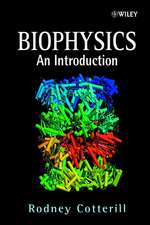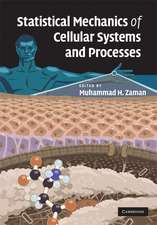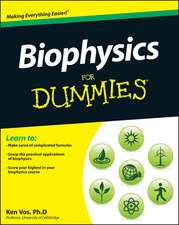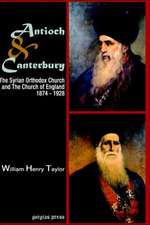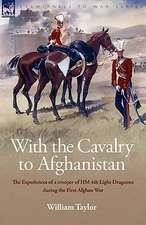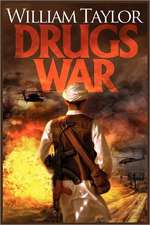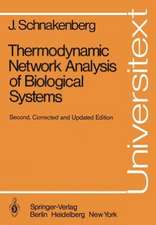Patterns in Protein Sequence and Structure: Springer Series in Biophysics, cartea 7
Editat de William R. Tayloren Limba Engleză Paperback – 23 dec 2011
Din seria Springer Series in Biophysics
- 18%
 Preț: 961.72 lei
Preț: 961.72 lei - 18%
 Preț: 893.84 lei
Preț: 893.84 lei - 18%
 Preț: 958.07 lei
Preț: 958.07 lei - 20%
 Preț: 552.24 lei
Preț: 552.24 lei - 18%
 Preț: 1117.82 lei
Preț: 1117.82 lei - 15%
 Preț: 643.99 lei
Preț: 643.99 lei - 24%
 Preț: 1046.72 lei
Preț: 1046.72 lei - 18%
 Preț: 952.26 lei
Preț: 952.26 lei - 18%
 Preț: 1226.24 lei
Preț: 1226.24 lei - 18%
 Preț: 1230.66 lei
Preț: 1230.66 lei - 18%
 Preț: 938.66 lei
Preț: 938.66 lei - 20%
 Preț: 551.86 lei
Preț: 551.86 lei - 18%
 Preț: 953.65 lei
Preț: 953.65 lei - 18%
 Preț: 948.16 lei
Preț: 948.16 lei - 15%
 Preț: 645.60 lei
Preț: 645.60 lei - 18%
 Preț: 723.38 lei
Preț: 723.38 lei - 18%
 Preț: 1146.56 lei
Preț: 1146.56 lei - 20%
 Preț: 569.85 lei
Preț: 569.85 lei - 15%
 Preț: 642.51 lei
Preț: 642.51 lei - 15%
 Preț: 644.49 lei
Preț: 644.49 lei - 15%
 Preț: 649.71 lei
Preț: 649.71 lei - 18%
 Preț: 951.29 lei
Preț: 951.29 lei - 15%
 Preț: 639.25 lei
Preț: 639.25 lei - 9%
 Preț: 872.34 lei
Preț: 872.34 lei
Preț: 639.59 lei
Preț vechi: 752.45 lei
-15% Nou
Puncte Express: 959
Preț estimativ în valută:
122.39€ • 128.10$ • 101.86£
122.39€ • 128.10$ • 101.86£
Carte tipărită la comandă
Livrare economică 31 martie-14 aprilie
Preluare comenzi: 021 569.72.76
Specificații
ISBN-13: 9783642766398
ISBN-10: 3642766390
Pagini: 280
Ilustrații: XII, 262 p.
Dimensiuni: 155 x 235 x 15 mm
Greutate: 0.4 kg
Ediția:Softcover reprint of the original 1st ed. 1992
Editura: Springer Berlin, Heidelberg
Colecția Springer
Seria Springer Series in Biophysics
Locul publicării:Berlin, Heidelberg, Germany
ISBN-10: 3642766390
Pagini: 280
Ilustrații: XII, 262 p.
Dimensiuni: 155 x 235 x 15 mm
Greutate: 0.4 kg
Ediția:Softcover reprint of the original 1st ed. 1992
Editura: Springer Berlin, Heidelberg
Colecția Springer
Seria Springer Series in Biophysics
Locul publicării:Berlin, Heidelberg, Germany
Public țintă
ResearchCuprins
— Patterns, Predictions and Problems.- The Ultimate Rationale.- Protein Structure Prediction.- Motifs and Modelling.- Computational Techniques.- Current Problems in Pattern Matching.- Conclusions.- A Brief Review of Protein Sequence Pattern Matching.- Pattern Matching Methods in the Prediction of Protein Structure and Function.- Consensus Methods.- Regular Expressions.- Specific Structural Patterns.- Recent Work.- Multiple Sequence Alignment and Flexible Pattern Matching.- Background to Automatic Protein Sequence Alignment.- Multiple Sequence Alignment.- Flexible Pattern Matching.- Discussion.- SCRUTINEER: a Program to Explore and Evaluate Protein Sequence Patterns in Databases.- Description of the Program.- New Features of SCRUTINEER.- A Sample Session.- Planned Enhancements.- Pattern Exploration and Evaluation.- Examples of Motif Development.- Current Issues.- Availability of SCRUTINEER.- Patterns and Specificity — Nucleotide Binding Proteins and Helicases.- Conservation Patterns.- Structural Sources of Patterns.- Nucleotide Binding Patterns.- Nucleotide Binding Pattern Specificity.- Helicases.- Conclusions.- Discussion.- The Helix-Turn-Helix Motif and the Cro Repressor.- Comparative Structural Studies.- Sequence Analysis and Motif Matching.- Predicted Motifs.- New Structural Studies.- Discussion.- Assignment of ?-Helices in Multiply Aligned Protein Sequences — Applications to DNA Binding Motifs.- Usage of Hydrophobic Information in Helical Prediction.- Examples of Helical Prediction in DNA-Binding Domains.- Rules for Detection of Helices in Multiply Aligned Sequences.- Assignment of ?-Strands.- Automation.- An Expert System for Secondary Structure Prediction.- Four Helix Bundles.- Secondary Structure Prediction.- Discussion.- Patterns in Secondary StructurePacking — a Database for Prediction.- Topology, Packing and Geometry.- Parameter Selection.- Applications and Continuing Work.- Secondary and Supersecondary Motifs in Protein Structures.- Protein Structure Database Development.- Protein Structure Hierarchy.- Analysis of ?-Turns.- Supersecondary Structures.- ?-Hairpin Classification.- Modelling ?-Hairpins.- ?-Arches.- Other Supersecondary Structures.- Conclusion.- Discussion.- A Review of Methods for Protein Structure Comparison.- Methods Based on Comparison of Inter-Residue Distances.- Methods Comparing the Geometry of Fragments Along the Polypeptide Chain.- Methods Which Superpose Protein Structures or Fragments of Structure.- Methods Based On the Geometry of Secondary Structures.- Methods Incorporating Dynamic Programming Techniques.- Conclusions.- Patterns of Sequence and 3-D Structure Variation in Families of Homologous Proteins: Lessons for Tertiary Templates and Comparative Modelling.- X-Ray Analyses of Families of Proteins.- Rules Expressed as Environment-Specific Substitution Tables.- Rules for Generating Tertiary Templates.- Rules for Modelling Three-Dimensional Structure.- Discussion.- Modelling From Remote Sequence Similarity — Enveloped Virus Capsid Structure Modelled on the Non-Enveloped Capsid.- Virus Structure.- 3D Electron Microcopy of Enveloped Capsids.- Comparative Sequence Analysis.- Structural Model and Experimental Tests.- Conclusions.- Discussion.- Structural Motifs of the Extracellular Matrix Proteins Laminin and Tenascin.- Structural Organization of Laminin and Tenascin.- Sequence Arrangement of Laminin and Tenascin.- Sequence Motifs of Laminin and Tenascin.- Amino-Terminal Domains.- Cysteine-Rich Domains.- Heptad Repeats (?-Helical Coiled-Coils).- Fibronectin Type III Repeats ofTenascin.- Homology of Sex Hormone Binding Globulin to C-Terminus of Laminin A-Chain.- Fibrinogen Homology to C-Terminus of Tenascin.- “Molecular Modelling” by Motif Analysis and Electron Microscopy.- A Sequence Motif in the Transmembrane Region of Tyrosine Kinase Growth Factor Receptors.- Neu Dimerisation.- Sequence Motif.- Conclusion.- Discussion.


